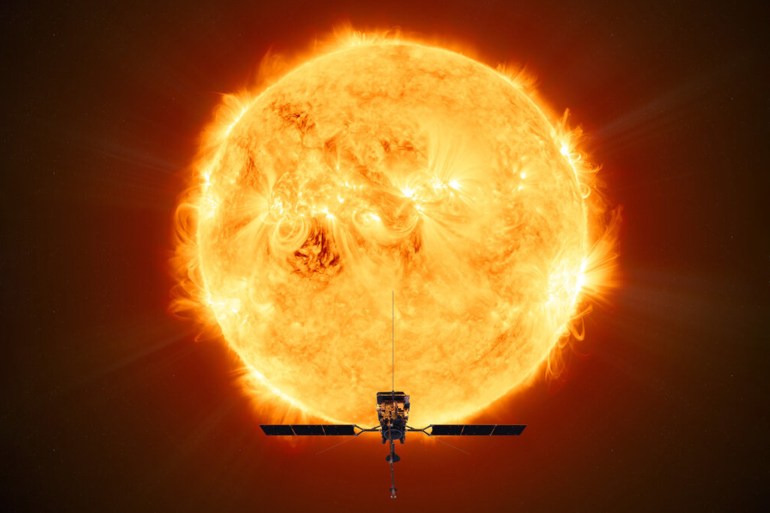8/26/2023–|Last Updated: 8/26/202311:04 PM (Makkah Time)
Although the solar wind is an essential feature of the Sun, understanding how and where it is generated by the Sun has proven elusive, and has thus been a major focus of study by scientists for decades.
Recently, a recent study published in the journal “Science” – the European Space Agency and NASA’s “Solar Orbiter” spacecraft revealed numerous small jets of material ejected from the Sun’s outer atmosphere.
Each burst lasts between 20 and 100 seconds, and releases plasma at speeds of around 100 kilometers per second. These jets could be the source of feeding the solar wind, something scientists have been waiting to discover for a long time.
Ultraviolet Imaging
The solar wind typically consists of charged particles called plasma, which are constantly ejected from the Sun and spread outward through interplanetary space, hitting anything in its path, creating the aurora borealis when the solar wind collides with Earth’s magnetic field. .
Thanks to its excellent instrumentation, the Solar Orbiter has taken an important step forward in understanding the source of the solar wind. The data came from the Extreme Ultraviolet Imager (EUI) instrument on board the Solar Orbiter.
According to a press release published on the European Space Agency’s website on August 24, images of the Sun’s south pole taken by the instrument on March 30, 2022, revealed faint, short-lived features associated with small jets of plasma. Atmosphere to Sun.
“We were only able to detect these tiny jets because of the unprecedented high-resolution, high-frequency images produced by the ultrasound imaging instrument,” says Lakshmi Pradeep Chetta of the Max Planck Institute for Solar System Research in Germany. Paper describing this work. Ultraviolet”.
The instrument detected solar plasma at a wavelength of 17.4 nanometers at one millionth of a degree, and analysis of the images showed that the faint features revealed by the imaging are caused by the ejection of plasma from the solar atmosphere.
Flow is discontinuous and not always constant
Researchers have known for decades that much of the solar wind is associated with magnetic structures called coronal holes, which are regions where the magnetic field does not return to the Sun, but instead, extends deep into the solar system, where plasma flows with the magnet. Field lines travel to the open, solar system, forming the solar wind. But the question is: “How is plasma fired?”.
The traditional assumption is that as the corona heats up, it naturally expands and exits along some of its magnetic field lines, but new findings challenge the assumption that the solar wind is formed solely as a result of the corona’s steady, steady flow.
Within the corona, there is a difference between large-energy solar flares, billions of times larger than so-called nanoflares. As for the smaller jets detected by the solar tracker, they are less active than that.
These tiny jets emit about 1,000 times less energy than a nanoflare, and much of that energy dissipates into the plasma. The ubiquity of these small, faint jets suggests that they eject much of the material we see as the solar wind.
“Finding something in the disk that definitely contributes to the solar wind is an important step,” says David Bergmans of the Royal Observatory of Belgium and principal investigator of the Super Imaging Tool about what the new images reveal.

Higher education
Currently, the Solar Orbiter is orbiting the Sun near the equator, with the Superior Imager imaging across the South Pole.
As the mission continues, the spacecraft will gradually adjust its orbit around the polar regions. At the same time, the Sun’s activity will progress during the current solar cycle and coronal holes will begin to appear at different latitudes, providing a unique new perspective.
So researchers are eager to see what new they can glean about solar activity, a research mission that extends beyond the solar system.
Only the Sun can observe its atmosphere in such detail, and this could be reflected in understanding what is happening in other stars as well. This makes these observations the discovery of a fundamental astrophysical process.
Evidence : Websites + European Space Agency

“Professional coffee fan. Total beer nerd. Hardcore reader. Alcohol fanatic. Evil twitter buff. Friendly tv scholar.”